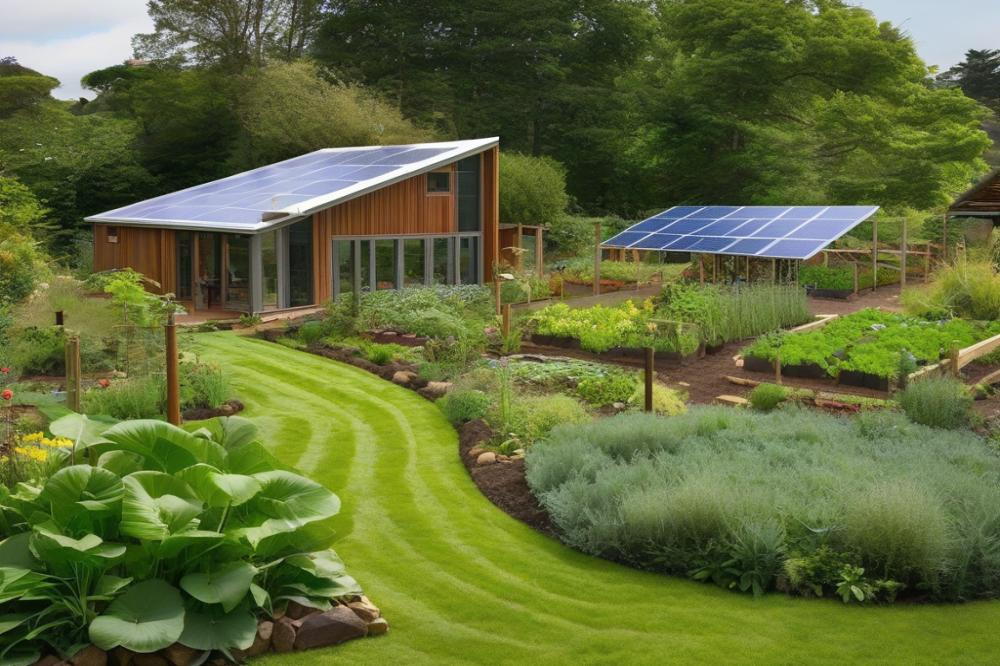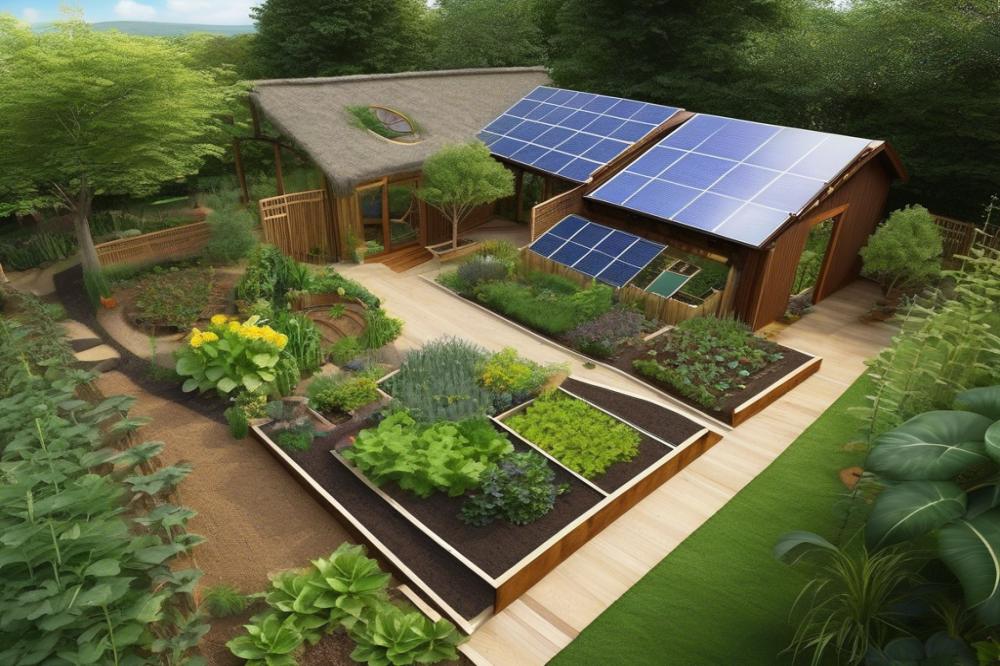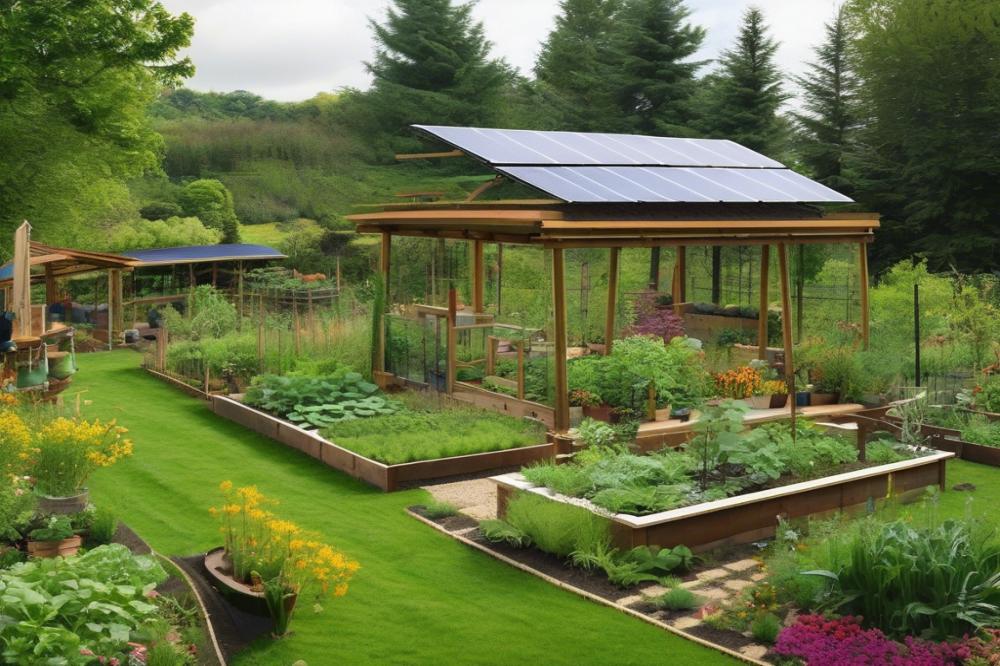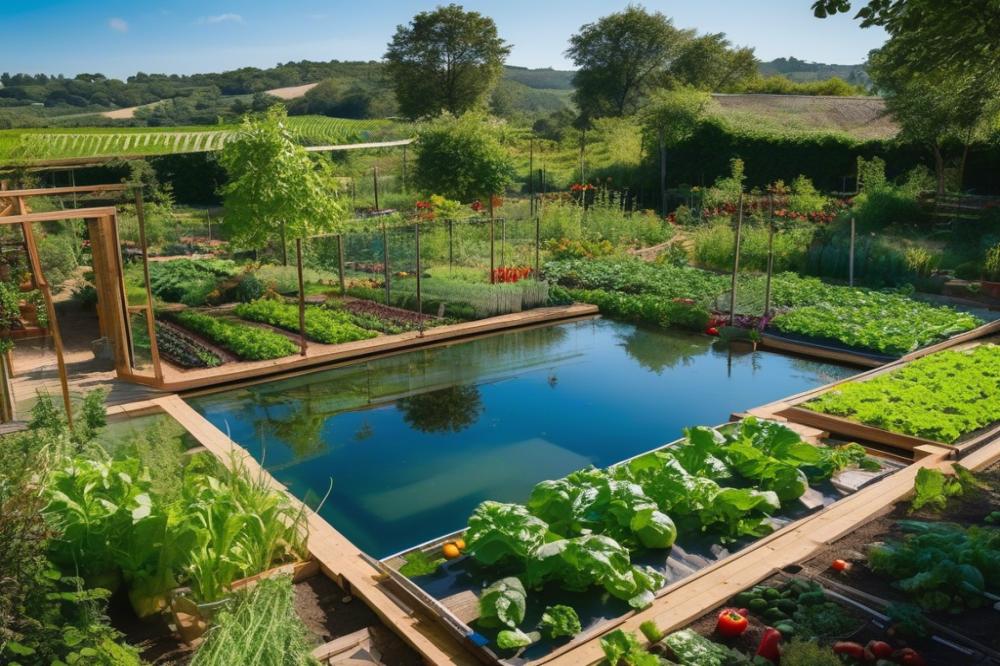Introduction
Climate change is reshaping our world in profound ways. Agriculture feels the effects more than many other sectors. Extreme weather events, changing rainfall patterns, and rising temperatures put immense pressure on farmers and local communities. These challenges threaten food security and community stability. As crops falter and soil depletes, the fight against hunger becomes harder for families everywhere.
Fortunately, solutions exist. Ecological design offers a path to restore balance. One method gaining attention isPermaculture-practices”> sustainable agriculture, which focuses on long-term health rather than short-term yields. By integrating practices that enhance soil health and biodiversity, we can create a stable food system amidst climate uncertainties. Techniques such as agroecology promote Permaculture-landscape-for-your-climate”>resilience in farming and help communities adapt to shifting conditions.
This article aims to explore how Permaculture principles can serve as a guide for adaptation and resilience. By utilizing innovative methods, individuals can foster community gardening projects that not only produce food but also strengthen bonds among neighbors. Effective water management and diverse planting can safeguard against shortages, ensuring that communities thrive even in challenging climates.
In essence, addressing climate change requires collaboration, creativity, and commitment. This exploration will shed light on the ways in which embracing sustainable agriculture and ecological practices can lead us toward a more resilient future.
Understanding Permaculture


Permaculture is a method of gardening that goes beyond simply growing plants. This approach focuses on creating sustainable ecosystems that can thrive with minimal human intervention. It promotes harmony between nature and agriculture, allowing each element in a garden to support the others. Picture a space where plants, insects, and soil work together efficiently. This is the essence of good gardening through sustainable practices.
Core Principles and Climate Change
Several principles guide this approach, helping us to adapt to climate change while promoting resilience. For instance, one core principle is to observe and interact with nature. By understanding local climate patterns, we can choose crops that are well-suited to changing conditions. Native species often show higher resilience against pests and diseases, which helps maintain biodiversity.
Designing systems such as companion planting enhances soil health. Grasses and legumes can restore nutrients, promoting sustainable agriculture. Water management also becomes vital in a world where rainfall patterns are unpredictable. Implementing swales or rain gardens allows us to capture water efficiently. In addition, perennials require less maintenance and provide year-round yields, contributing to food security.
Ecological Design and Community Gardening
The relationship between permaculture and ecological design creates spaces that benefit the community. It emphasizes the importance of local resources. For instance, community gardening brings people together to learn and share knowledge about agroecology. These shared gardens can improve access to healthy food, addressing issues of food deserts.
Each element in an ecological design is intentional. When we plant a variety of crops, we boost biodiversity, making the system healthier. Insects and microorganisms thrive, helping plants grow without synthetic fertilizers. This interconnectedness showcases the power of working with nature, rather than against it.
Fostering these environments will allow us to build communities that adapt to climate challenges. By embracing these principles, not only do we grow a garden, but we also cultivate a knowledge base that empowers individuals and communities alike. A thoughtful approach yields sustainable practices that lead to a more resilient world.
Resilience through Permaculture


Resilience is a critical aspect of adapting to climate change. It refers to the ability of ecosystems and communities to recover from disturbances. Implementing practices rooted in sustainable agriculture enhances this quality. By using ecological design principles, we can create systems that withstand environmental pressures. Communities can become more self-sufficient through effective resource management.
How permaculture fosters resilience in ecosystems and communities
Building resilient ecosystems starts with understanding interconnections. Healthy soils contribute significantly to plant growth and biodiversity. When soil health is prioritized, it directly impacts food security. Additionally, water management plays a crucial role in maintaining plant life during droughts. By mimicking natural ecosystems, communities can cultivate a diverse range of species that support each other.
These principles promote synergy among plants, animals, and humans. For instance, community gardening creates spaces for people to grow food together. It fosters social ties and shared responsibilities. Educating individuals on how to manage these spaces creates empowered communities. This kind of grassroots movement strengthens collective resilience in the face of climate challenges.
Examples of resilient permaculture systems
There are numerous real-world examples that highlight successful approaches. One notable case is the use of agroecology in urban settings. In cities, integrating green roofs provides insulation and boosts biodiversity. Pollinators thrive in these habitats, which benefits the surrounding areas. Another example is rainwater harvesting systems used in rural farms, which help manage water resources efficiently.
Some communities have implemented agroforestry techniques, combining crops with trees. This method improves soil fertility while offering shade and habitat. Those systems showcase the interdependence of various species, which strengthens overall resilience. Each system adapts to local conditions and needs, making them uniquely effective.
Role of biodiversity in creating resilient landscapes
Biodiversity is a cornerstone of resilient landscapes. Diverse ecosystems can better withstand pests and diseases. When multiple species are present, they support one another in various ways. For example, certain plants can fix nitrogen, improving soil health for their neighbors. This interconnectedness creates a natural balance that reduces the need for chemical inputs.
Creating habitats for different species encourages natural predators of pests. Promoting wildlife can lead to healthier agricultural practices. Enhancing biodiversity ensures that landscapes remain productive even as conditions change. Resilient systems thrive on variety, making them less susceptible to extreme weather patterns.
By weaving these concepts together, communities can create more robust environments. Sustainable practices are not just beneficial; they are essential. Everyone has a role in fostering resilience through thoughtful design and collective action.
Sustainable Agriculture Practices


Integration of Permaculture in Sustainable Agriculture
Incorporating permaculture principles into sustainable agriculture can create resilient systems. This approach emphasizes working with natural ecosystems rather than against them. Farmers can use these methods to promote biodiversity. This means encouraging a variety of plants and animals, which can lead to healthier environments. A well-designed landscape can produce food while maintaining ecological balance. When farmers embrace these ideas, they contribute to food security. Community gardening can be a part of this effort, allowing neighbors to grow and share food together.
Agroecology and Its Connection to Permaculture Methodologies
Agroecology connects deeply with permaculture methodologies. It focuses on understanding the relationships between plants, animals, soil, and water. These systems consider not just the crops but also the whole ecosystem. This holistic perspective can lead to more sustainable techniques. Integrating diverse plant species can enhance resilience. When crops work together, they naturally repel pests and diseases. The results can be amazing, as ecosystems thrive with minimal intervention. Families can benefit by having access to fresh produce.
Techniques for Enhancing Soil Health Within Permaculture Settings
Soil health is vital for agriculture, and there are many techniques to improve it. One effective method is using cover crops. These plants protect the soil when main crops aren’t growing. They prevent erosion and improve nutrient levels. Composting is another beneficial practice. Adding organic matter back into the ground can enrich it. Mulching helps retain water and suppress weeds, which is crucial for sustainable agriculture. Water management plays an important role as well. Efficient irrigation systems can reduce waste and support healthier plants. Overall, these techniques create a robust environment for growth and enhance resilience in the face of climate challenges.
Water Management Strategies


Effective water management plays a crucial role in climate adaptation. As weather patterns become more unpredictable, communities need reliable systems to collect and conserve water. With rising temperatures and changing rainfall, challenges arise that can threaten food security. Sustainable agriculture practices help build resilience and allow communities to withstand climate impacts. This transformation can protect our most vital resource: water.
Permaculture Approaches to Water Conservation and Irrigation
Incorporating ecological design into gardens can significantly improve water retention and usage. Techniques like swales, rain gardens, and ponding areas are vital in conserving moisture. By capturing rainwater, these systems feed plants naturally and reduce dependency on external water sources. Utilize earthworks to create contour beds, which slow down water runoff and promote soil health. By employing agroecology principles, we can enhance biodiversity while ensuring our plants receive adequate hydration.
Examples of Water Management Practices in Permaculture Gardens
Several effective practices help support water management in community gardening. For instance, mulching reduces evaporation by keeping the soil cool. This also suppresses weeds that compete for moisture. Another practice includes planting drought-tolerant species, allowing gardens to thrive with limited water. Drip irrigation systems can deliver water directly to plant roots, increasing efficiency. Moreover, creating microclimates with shade structures can help curb water loss, adding layers of protection for delicate crops.
Incorporating these strategies not only preserves water but also contributes to overall resilience in changing climates. Learning from nature allows us to adapt and thrive amidst challenges. By adopting these innovative water management strategies, we can foster vibrant ecosystems that support diverse plants while improving community well-being.
Community Gardening and Food Security
Role of Community Gardening in Enhancing Food Security
Community gardens play a vital role in food security. By growing food locally, people can access fresh fruits and vegetables. This reduces dependence on distant grocery stores. Additionally, these gardens foster connections among neighbors. They bring people together, creating a sense of belonging. When individuals work together, they share knowledge about sustainable agriculture. This shared learning leads to better food production practices.
Gardens serve as educational spaces. Children and adults learn about where their food comes from. This awareness encourages healthier eating habits. In cities, community gardening can combat food deserts. Many urban areas lack access to nutritious food. Establishing gardens in these locations helps fill that gap. People gain the ability to control their food supply.
Permaculture’s Contribution to Local Food Systems and Urban Resilience
Through ecological design, we can build resilient urban areas. Local food systems benefit from permaculture principles. These methods prioritize biodiversity and soil health. By using techniques that mimic natural ecosystems, gardeners can thrive. Crop rotation, companion planting, and organic practices boost productivity. Communities become less vulnerable to climate change effects.
Water management is another crucial aspect. Proper irrigation systems preserve water resources. This approach minimizes waste and maximizes yield. When community gardens adopt these principles, they become self-sustaining. The resilience of urban environments increases significantly. By having more local food production, cities can reduce their carbon footprint.
Case Studies of Successful Community Permaculture Projects
Numerous successful examples exist around the world. One notable project is the “Incredible Edible” initiative in Todmorden, England. This community transformed public spaces into vegetable gardens. Residents can harvest fresh produce without barriers. It has not only improved food security but also promoted community spirit.
Another inspiring case comes from Detroit, Michigan. The city has faced numerous challenges with food access. In response, local groups launched urban permaculture projects. These efforts resulted in an increase in local food production. They transformed vacant lots into productive green spaces. The community now enjoys fresh, nutritious food where none existed before.
Such examples demonstrate the power of collective action. As communities unite to garden and grow food, they reinforce local connections. Increased resilience follows as neighborhoods adapt to climate challenges. Local projects provide clear evidence of the benefits. Communities engaged in this work showcase hope and perseverance.
Final Thoughts on Embracing Sustainable Practices
The discussion surrounding sustainable agriculture as a response to climate change has revealed several key points. First, utilizing natural systems in gardening can dramatically enhance our ability to deal with unpredictable weather and shifting climates. Ideas such as companion planting, water conservation, and soil health play critical roles in our landscapes and communities.
Significantly, these techniques foster resilience in local ecosystems. They help to create environments that can withstand extreme conditions, reducing our reliance on chemical inputs. Additionally, they can improve biodiversity, making ecosystems more adaptable. This interconnectedness of farming, gardening, and nature truly points toward a promising path for future food security and environmental health.
It’s clear that embracing these practices is essential for all of us. Each small action contributes to a larger movement that can address climate issues effectively. Whether you have a small balcony garden or a larger yard, incorporating these ideas is not just beneficial—it’s necessary.
Now is the time to take action. Explore ways to integrate these practices into your own gardening efforts, and encourage others to join. Community gardens, native plant projects, and local workshops can all help spread the word and implement these strategies. By cooperating and sharing knowledge, we can build a more resilient future. Together, let’s move toward a world where sustainable practices thrive, not just for ourselves, but for generations to come.



